Beauty is the Beast in Image's Cry Havoc
Nov 12, 2015
by Vince Brusio
How do myths matter? How do they maintain shelf life? Is it because a publisher keeps a particular novel in stores due to multiple printings, and thus Mother Goose tales never expire? Or is it because a myth, from time to time, shows its ugly head on the evening news, and this keeps the myth relevant. Si Spurrier examines such a quandary in his and Ryan Kelly’s Cry Havoc #1 (NOV150482) for Image Comics. In this PREVIEWSworld Exclusive interview, both men ponder what it takes for a beauty to deal with the fact that she's a beast.
Cry Havoc #1 (NOV150482) is in comic shops January 27.
**********
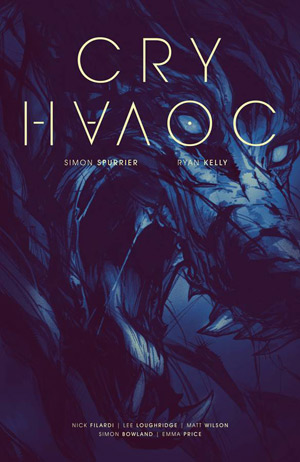 PREVIEWSworld: Si, what’s the genesis for Cry Havoc (NOV150482)? What made you king of the Hyena Fan Club? Did you just “shoot first” and worry about filling in the blanks later, or were there mismanaged notes from years ago trapped in a binder that you kept shelved in a closet?
PREVIEWSworld: Si, what’s the genesis for Cry Havoc (NOV150482)? What made you king of the Hyena Fan Club? Did you just “shoot first” and worry about filling in the blanks later, or were there mismanaged notes from years ago trapped in a binder that you kept shelved in a closet?
Si Spurrier: Ha, no, this one bubbled-up like a bad smell in an elevator full of enemies: occurring at exactly the right moment for me to make the most of it.
The history of the idea, such as it is, is that I've always been a folklore nerd, and I'd been idly pondering how I might take all the stuff I love about myths and monsters, and inject it into a very relevant and modern story. I basically wanted to flip the birdie at the laziest conventions of the Creature Feature story – while keeping all the, y'know, savage snarly fiendish good stuff – and do something smarter and more meaningful with it.
As the idea grew it absorbed a bunch of very timely material: Realpolitik, the war against terror, non-binary sexuality, big pharma, and so on. But at its core it's a very intimate story about one woman whose life is overthrown by chaos. Also: monsters. Aaaand all the educational asides about, say, the unique biology of Hyena junk were just a happy bonus.
Although, actually, now I come to say it, even those are thematically pertinent. Cry Havoc's one of those books where nothing is there by accident.
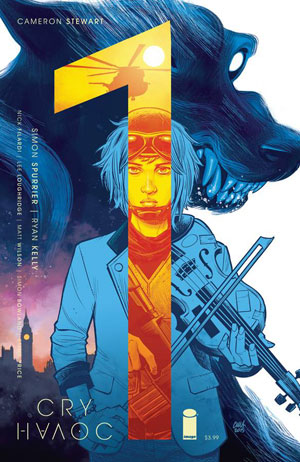 To strip it right down: it's the story of a gay London musician, struggling with her identity, who gets violently plunged into an occult nightmare – which (as you'd expect) totally borks her life.
To strip it right down: it's the story of a gay London musician, struggling with her identity, who gets violently plunged into an occult nightmare – which (as you'd expect) totally borks her life.
In order to overcome this sinister influence she's sent to war-torn Afghanistan with a unit of Private Security Consultants – think Blackwater – each of whom, like her, holds a monster inside themselves.
Their mission: to locate and kill the leader of a folkloric revolution.
One thing we've done (and I'm super proud of this idea) is to take these three parts of the character's story and explore them side-by-side, rather than one after another. We jump between these phases in the protagonist's life in a really unique way, letting parallel moments strike sparks and juxtapose.
To make the most of it we've done something unprecedented: each section of the story is tackled by a different big-name colorist. We've got Nick Filardi handling the “beginning” scenes in London, Lee Loughride on the sinister blood-drenched stuff at the end, and Matt Wilson rendering the arid Afghan hills of the central journey. The effect is astonishing. It really helps differentiate the three time-zones, and it showcases just how much impact the colorist's art can have on comics.
Of course the lion's share of the swooning must go to my superstar artist and co-creator. In depicting a story like Cry Havoc — which combines the epic with the intimate, the savage with the sensitive — I couldn't have found anyone better suited than the great Ryan Kelly.
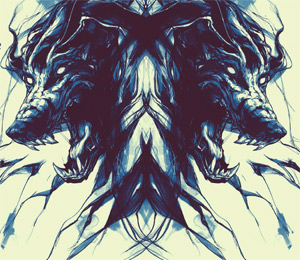 PREVIEWSworld: Ryan, there’s quite a bit of artwork depicting soldiers in uniform and military-style carnage. What visuals did you consult before you approached your sketch work?
PREVIEWSworld: Ryan, there’s quite a bit of artwork depicting soldiers in uniform and military-style carnage. What visuals did you consult before you approached your sketch work?
Ryan Kelly: Yeah, lots of army stuff in Cry Havoc. That element of the story didn’t really grab me at first, but I’m having fun with it now. It just snuck up on me later, and I had to say to myself, “oh yeah, I guess I have to draw army stuff now.” I’m sure when it comes to those smart, special ops-style comics, there’s a whole group of artists that are considered that aren’t me. But, I think I’ve shown how versatile I am with the projects I’ve done, and I love being challenged. Whether it’s Vikings or Spartans in Ancient Greece, I just do whatever I need to do to make the designs honest and accurate.
I didn’t really do any special research for the book. Just getting the pages done takes so much out of me, so I usually just want the sketch stage over with. With the soldiers in Cry Havoc, I tried to blend a futuristic sci-fi aesthetic with the natural look of traditional army gear. I looked at Special Ops Forces uniforms from other countries like South Korea, for instance. Black uniforms and masks and high tech gear.
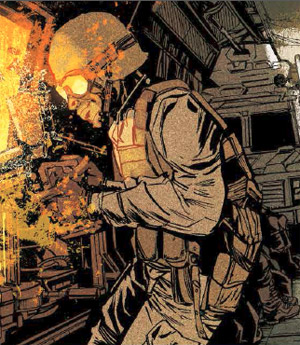 I always wanted to draw a G.I. Joe comic. I was a huge Larry Hama G.I. Joe fan as a kid. I read all the comics. I’m treating Cry Havoc as the G.I. Joe comic I finally get to draw.
I always wanted to draw a G.I. Joe comic. I was a huge Larry Hama G.I. Joe fan as a kid. I read all the comics. I’m treating Cry Havoc as the G.I. Joe comic I finally get to draw.
PREVIEWSworld: Si, it appears a children story from when you were a wee little tot had some bearing on Cry Havoc. Could you elaborate a bit on how this tale figures into the inspiration for this new title?
Si Spurrier: Oh yeah, that's the highly recommended and 100% disturbing Not Now Bernard by David McKee, a picture book for kids which I write about a little in the author's note in Issue #1.
I won't ruin it for you – the book nor the note – but NNB is basically a fabulously layered little tale which appears (to the watery eyes of four-year-old Si Spurrier) to be utterly horrific, featuring the unavenged death-by-monster of its protagonist... but which then, to the slightly-less-watery eyes of thirty-four-year-old Si Spurrier, reveals itself to a remarkably clever bit of narrative technology intended to make parents feel guilty and kids feel superior. As I believe I put in the writer's note, the moral-of-the-story, which stayed with me so potently all these years, is: Just because the beast is you, doesn't mean it can't eat you whole.
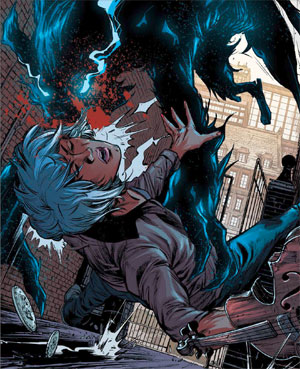 To an extent that's a perfect encapsulation of the controlling idea at the heart of Cry Havoc. On a slightly wider spectrum it speaks volumes of how fertile folklore and mythology can be when it comes to allegory, metaphor and theme: all of which are carefully woven in CH.
To an extent that's a perfect encapsulation of the controlling idea at the heart of Cry Havoc. On a slightly wider spectrum it speaks volumes of how fertile folklore and mythology can be when it comes to allegory, metaphor and theme: all of which are carefully woven in CH.
See... I've always been interested in the fact that folklore – which, when you get right down to it, is simply a suite of stories which were once so widely believed that they were held to be facts, or at least articles of faith – have a shelf life. No matter how entertaining, creative or plausible, myths always fade away.
When I started thinking about Cry Havoc I simply began to wonder how you might feel if you were one of the myths. What you might do, to try and retrieve your long-lost relevance. And, of course, how the rest of the world would react.
Without expecting it, the whole thing became a brutal metaphor for an experience literally all of us have felt at one time or another: the disenfranchised, disillusioned urge to try and matter.
PREVIEWSworld: Ryan, the book’s tone can shift from lover’s quarrel, to a military snafu, to gory violence you’d see in a horror movie. That’s quite a bit of gear-changing to do all in one book. How do you shift those gears? What helps you mix the brain alcohol necessary to create such imagery and emotion that changes shape every couple of pages?
Ryan Kelly: It’s hard....It’s tricky...but I’m used to juggling wildly disparate projects by now. I haven’t gone mad yet. Luckily, Si’s script is smooth and seamless. Nothing is out of place and each scene just blends in to the other so well. Si is able to use language and metaphors to unify themes across Lou’s entire story.
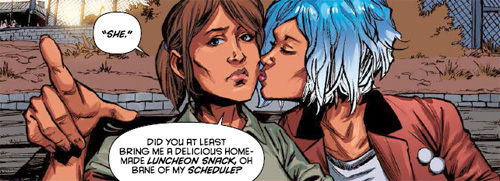 |
I don’t know if you can see it in the art, but I see Lou’s flashback scenes (in London) as very dream-like. She’s just trying to get through the day, but she loses the ability to discern what’s real and what’s not as her monster takes over. The present-tense scenes (in Afghanistan) I see as being really raw and gritty and urgent. The future-tense scenes are very surreal and bizarre and exotic and I try to depict that in the art.
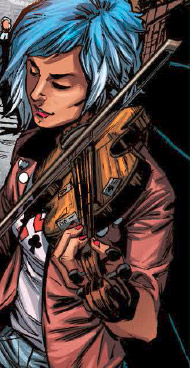 I feel that I’m really good at just telling the story. I’m not really good at drawing “stuff.” My strengths are the emotional stuff. I’m best at showing all the characters — and there’s a lot of crazy characters in Cry Havoc — interacting with each other, and nailing down the facial expressions and big, intense moments. My art takes a backseat once the colorists do their thing. They really make each “stage” feel unique and real. I feel like our colorists make the “gear-shifting” successful. You’ll see.
I feel that I’m really good at just telling the story. I’m not really good at drawing “stuff.” My strengths are the emotional stuff. I’m best at showing all the characters — and there’s a lot of crazy characters in Cry Havoc — interacting with each other, and nailing down the facial expressions and big, intense moments. My art takes a backseat once the colorists do their thing. They really make each “stage” feel unique and real. I feel like our colorists make the “gear-shifting” successful. You’ll see.
PREVIEWSworld: Si/Ryan if you would both please entertain this question: What would you say to comics fans that would get them jazzed up to read this book? What is it about this book that would make them want to put it on their pull list?
Si Spurrier: Oof, elevator pitch time. Medium-length version: it's the wide-screen military melancholia of Jarhead – erosion of the self, emotional numbness, bursts of abhorrent violence – meets Pan's Labyrinth: an un-Disneylike take on myth, monstrosity and magic.
Ryan Kelly: Short version: it's not a book about a lesbian werewolf going to war. Except it kind of is.




